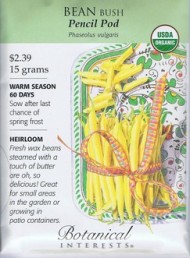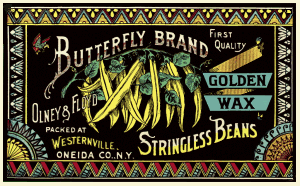The Seed Saver Exchange, an organization that does just what the name states and with the authority deserving of proper noun status, has 4,000 types of bean in its collection. Among these is the Pencil Pod Yellow Wax heirloom variety. Pencil Pods are bush beans, meaning they don’t need the high vertical supports string beans and other pole beans do. They were developed around 1900, soon after folks started trying to breed the pesky “string” fiber out of beans (Check out Monday’s post) and are best raw or lightly steamed. They also have little black seeds nestled in golden flesh, giving the bean a cool bumblebee color scheme or—if you happen to be appreciate your Christian Hair Metal—making it a fine tribute to Stryper. Continue reading
Tag Archives: heirloom beans
Dead Man Gnawing: The Stringless Bean (1884)
For most of the thousands of years that humans have grown them, beans have had long, fibrous strings running along the pod seam (hence “stringbeans”) and a tough lining between the peas and the pod. The original bean farmers, native tribes in the Americas, raised beans to shell and discard the pods, not enjoy fresh what we generally know today as green beans. There are far more fresh, eatable beans than just green beans, of course, but that’s not we’re addressing today. We’re addressing the origin of those fresh snap beans, a dude named Calvin Keeney. Continue reading


